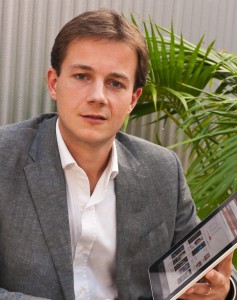Centralisation v localisation: is there a choice?
 Robin Kroes calls for an ‘and/and’ solution of a central and local mix to meet the ever-more complex needs of channel playout.
Robin Kroes calls for an ‘and/and’ solution of a central and local mix to meet the ever-more complex needs of channel playout.
Broadcasting has always been a challenging profession, but at least on the choice of centralisation v localisation, life used to be simple. In the tape-based world, with most channels operating in single-markets only, channel playout was naturally organised very close to where content was created and consumed by the viewer. Broadcasters therefore benefited from scale in one location, while the output was tailored to the viewer’s needs.
As channels internationalised, a choice had to be made. Channels could be played out from the original playout location, or alternatively a new local playout could be added. Where the first option was more cost effective (build on existing setup, reuse existing feed by adding languages), the second option enabled channels to better address local needs. A local presence could improve the understanding of local viewer preferences and of the competitive TV landscape. A unique local feed could be launched, program acquisition and scheduling could be optimised for local market needs and programming could be supported with localised on-air graphics. Also, local advertising could be inserted increasing the channel’s local relevance and supporting the overall economics. As thematic TV markets have grown and matured, the need to localise has become increasingly strong and many channels have branched out.
But then, just as it seemed a new balance was found, the requirements changed. In addition to delivering content for one linear feed, channels are now asked to deliver multiple versions per program to accommodate requests for HD, 3D, and VOD for TV platforms. And, it will only get more challenging as content will soon need to be made available in multiple bandwidths to allow viewing on all internet-enabled devices.
Labour intensive, tape-based processes are not appropriate in this context as these just do not deliver the outputs in time, or can only do so at very high staff costs hence damaging channel competitiveness. In today’s context, automation and scale are a real must and this is where the channels now face complications. This scale is very often lacking in the localised playout solutions. So, it seems we have ended up in one of those ‘and/and’ cases- channels need to be local and central.
Contrary to how it looks, it is not impossible to do this but requires substantial changes.
At Chello DMC we recognise that the starting point to a solution is a central archive which holds all content for all markets, managed by a strong media asset management system. This system should be accessible over a normal PC from any location worldwide to browse content, retrieve content for editing, or give orders to encode/transcode and deliver content according to needs in a way that is a simple as ordering a book on Amazon. In this way content is processed and prepared only once, so all deliveries are from the same source and without any manual intervention. In support of this, Chello DMC has launched a media portal which has been very positively received by clients.
To allow for local advertising, different solutions have been invented that are mostly based on placing servers in local markets. These are based on triggers which take over the playout of the channel during ad breaks. The ads are local but the rest of the content is played out centrally with the appropriate language tracks for each market. We manage an increasing number of services like this and expect this number to grow further.
Remote playout solutions, where a server placed in a local market produces a fully dedicated local feed, is taking this one step further. The server is digitally receiving its content from the central archive and all other activities (eg scheduling, monitoring) are done centrally to benefit from scale.
There are many more examples of this but they all are based on the same principle. Build a solution that eliminates the need to duplicate work, while allowing full flexibility to tailor the output as much as desired to local needs. This is the challenge that Chello DMC has been addressing for the last few years. The logic is simple, but unfortunately realising this solution is not. There is not one box that does it all and an overhaul of systems and work processes is required. So, we need to develop the ‘and/and’ solution (central and local mix) and manually feed through larger amounts of content than desired in the meantime. This adds a lot of ‘and’s’ to the mix calling all broadcasters to focus on getting this one right.
Robin Kroes is vice-president, commercial, operations and corporate development at Chello DMC.
